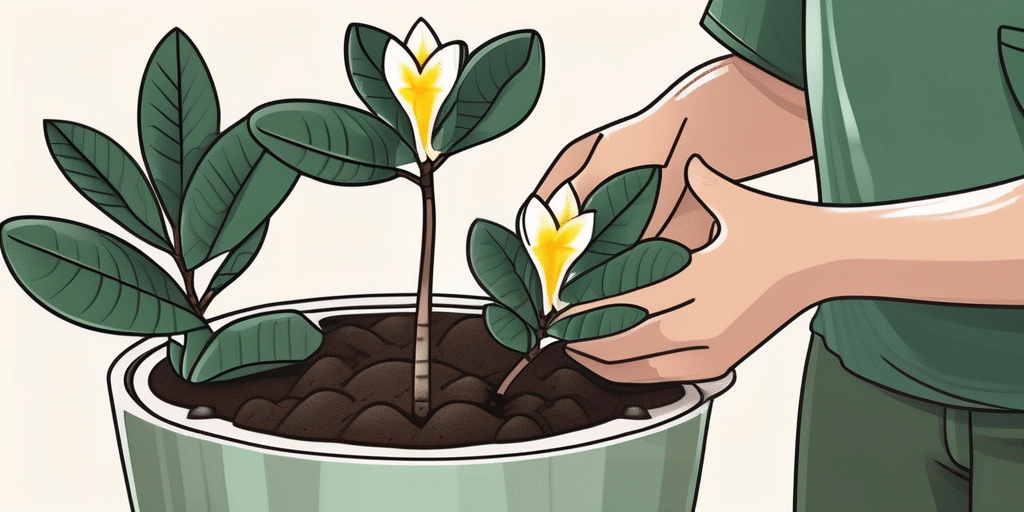The indoor elephant ear plant, scientifically known as Alocasia, is a stunning addition to any indoor garden. Its large, dramatic leaves resemble the ears of an elephant, hence the name. This tropical plant can be a bit challenging to grow indoors, but with the right care and knowledge, you can enjoy its lush, exotic beauty in your home.
Understanding the Indoor Elephant Ear Plant
The indoor elephant ear plant is native to the tropical rainforests of Southeast Asia. It belongs to the Araceae family, which includes other popular houseplants like the peace lily and philodendron. There are over 70 species of Alocasia, each with its unique leaf shape, size, and color.
These plants are known for their large, heart-shaped leaves that can grow up to 3 feet long in their natural habitat. However, indoor plants typically have smaller leaves, ranging from 1 to 2 feet long. The leaves are usually dark green with prominent veins, although some varieties have variegated or colored leaves.
Popular Varieties of Indoor Elephant Ear Plants
There are several varieties of Alocasia that are popular as indoor plants. Here are a few:
- Alocasia Amazonica: Also known as Alocasia Polly, this variety has dark green leaves with bold silver veins.
- Alocasia Macrorrhizos: This variety, also known as Giant Taro, has large, glossy green leaves.
- Alocasia Zebrina: Named for its zebra-striped stems, this variety has long, slender leaves.
Caring for Your Indoor Elephant Ear Plant
While the indoor elephant ear plant can be a bit finicky, it’s not impossible to care for. Here are some tips to help you keep your plant healthy and thriving.
Light Requirements
Indoor elephant ear plants prefer bright, indirect light. Direct sunlight can scorch the leaves, causing them to turn yellow or brown. If you don’t have a spot with bright, indirect light, you can also use a grow light to supplement natural light.
According to the University of Florida IFAS Extension, Alocasia plants need at least 1,000 foot-candles of light, which is equivalent to bright, indirect light. However, they can tolerate lower light levels, although this may slow their growth and cause the leaves to be smaller.
Watering and Humidity
As tropical plants, indoor elephant ear plants love moisture. However, they don’t like to be waterlogged. The soil should be kept consistently moist, but not soggy. Overwatering can lead to root rot, a common problem with these plants.
According to the University of Illinois Extension, a good rule of thumb is to water the plant when the top inch of soil feels dry to the touch. However, the frequency of watering will depend on the plant’s size, the pot’s size, the soil type, and the environment.
Indoor elephant ear plants also prefer high humidity. You can increase humidity around the plant by placing it on a tray filled with pebbles and water, misting the leaves regularly, or using a humidifier.
Soil and Fertilizer
The ideal soil for indoor elephant ear plants is well-draining and rich in organic matter. A mix of peat moss, perlite, and compost is often recommended. These plants are heavy feeders, so they benefit from regular fertilization during the growing season.
The University of Florida IFAS Extension recommends using a balanced, water-soluble fertilizer at half strength every two weeks during the growing season. However, it’s important to avoid over-fertilization, which can lead to salt buildup in the soil.
Common Problems and Solutions
Like any houseplant, indoor elephant ear plants can encounter a few problems. Here are some common issues and how to address them:
Yellowing Leaves
Yellowing leaves can be a sign of overwatering or poor drainage. Check the soil to see if it’s waterlogged. If it is, you may need to repot the plant in fresh, well-draining soil. Also, make sure the pot has adequate drainage holes.
If the soil is not waterlogged, the problem could be insufficient light. Move the plant to a brighter location, but avoid direct sunlight.
Brown Leaf Tips
Brown leaf tips are often a sign of low humidity or underwatering. Increase humidity around the plant and check the soil moisture levels. If the soil is dry, water the plant thoroughly.
Pests
Indoor elephant ear plants can be susceptible to pests like spider mites, mealybugs, and aphids. Regularly inspect the leaves for signs of pests and treat with an insecticidal soap or neem oil if necessary.
Propagating Your Indoor Elephant Ear Plant
Indoor elephant ear plants can be propagated through division or stem cuttings. Here’s a simple step-by-step guide:
- Choose a healthy parent plant with several stems.
- Remove the plant from its pot and gently separate a section of the plant with at least one stem and roots attached.
- Plant the division in a pot filled with fresh, well-draining soil.
- Water the new plant thoroughly and place it in a location with bright, indirect light.
With proper care and attention, your indoor elephant ear plant can be a stunning addition to your indoor garden. It may require a bit more effort than other houseplants, but the result is well worth it.
Join Our Green-Thumbed Community!
Ready to transform your home with the lush beauty of tropical plants like the indoor elephant ear? At How to Grow Everything, we’re here to help you cultivate the garden of your dreams. Subscribe for free and get personalized gardening advice tailored to your location, grow zone, and experience level. No spam, just the best tips, deals, and special offers from our family to yours. Start growing your indoor oasis today!





